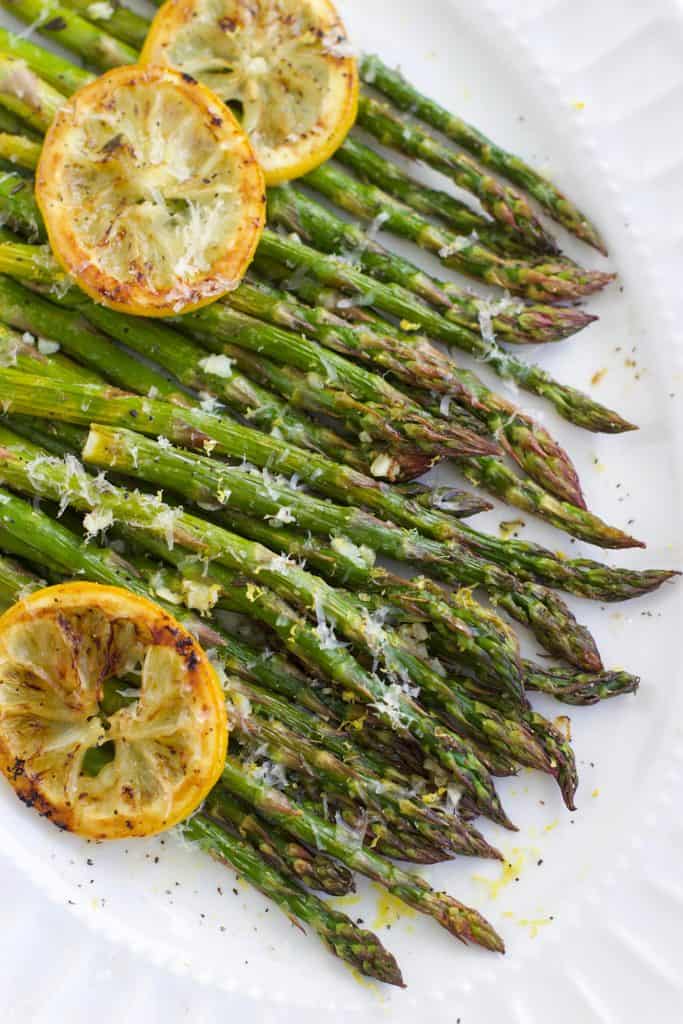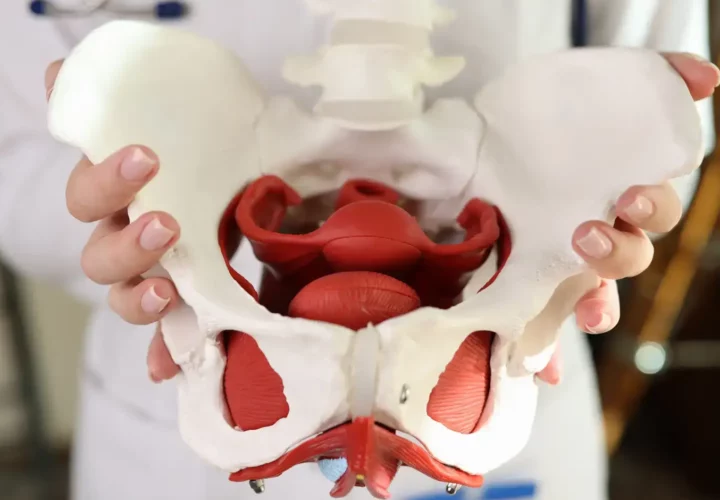Over the weekend I shared a picture on my Facebook page that showed the color difference of fresh and canned green beans. The fresh green beans were bright green while the canned green beans were a dark muggy green. Honestly I never really paid attention to the difference in color until I saw this post. So today I want to talk about fresh vs canned vegetables. Along with some nutritional information vegetables have including my two favorite vegetables.
Fresh Vegetables
Fresh vegetables are packed with a variety of Vitamins, Iron, Calcium, Fiber, Potassium, etc. The FDA actually has a great chart on nutritional value of some raw fresh vegetables. Two of my favorite vegetables are asparagus and bell peppers. Asparagus is easy to make while bell peppers are very versatile in the kitchen!
Asparagus
At 5 spears a serving and 20 calories, this vegetable has always hit the spot. One serving contains 230 mg or 7% of your DV of Potassium, 1% of your DV of Carbs, and 8% of your DV of Fiber. It also contains 2g of sugars and protein, along with 2% of Calcium and Iron. Vitamin wise it contains 10% of your DV of Vitamin A and 15% of your DV of Vitamin C. You can also find Vitamins E and K along with Chromium, which is a mineral that enhances insulins ability to transport glucose from the bloodstream into cells. Asparagus is also very rich in glutathione. This is a detoxifying compound which helps the break down of carcinogens and other harmful compounds such as free radicals. 
Other interesting healthy facts about asparagus include it being a top ranked vegetable for its ability to neutralize the cell damaging free radicals as mentioned above. It also has been known to help slow the aging process down and reduce inflammation. Lastly, asparagus contains high levels of an amino acid called asparagine which helps serve as a natural diuretic. While increased urination releases fluid it also helps rid your body of excess salts which benefits those with edema, high blood pressure, or other heart conditions.
The best way to cook asparagus is by roasting, grilling, or eating it in stir-fry. Cooking it this way helps preserve all of the wonderful nutrients and antioxidant power asparagus contains because it is quick and waterless.
Bell Peppers
One thing I love about bell peppers is they’re so versatile. They also add tons of fun coloring to my dishes! One serving size is a medium bell pepper or 5.3 oz. They contain 25 calories, 2% of your DV of Sodium, 220mg or 6% of your DV of Potassium, 2% of your DV of carbs, and 8% of your DV of Fiber. Bell peppers also contain 4 grams of Sugar, 1 gram of Protein, 2% of your DV of Calcium, and 4% of your DV of Iron. However vitamin wise, 190% of your DV of Vitamin C and 4% of your DV of Vitamin A. That is a CRAZY amount of Vitamin C! Way more than an orange or a cup of strawberries!
While there are different type of peppers (red, green, yellow) they each contain something unique!
- Red peppers contain Capsanthin. This is an antioxidant that helps give the pepper its bright red color! It has also been linked to enhancing insulin sensitivity!
- Violaxanthin which is a common carotenoid in yellow peppers. Carotenoids help boost your immune system and protect you from disease.
- Green peppers contain Lutein which helps promote eye health.
Lastly peppers contain Quercetin and Luteolin. Studies point to these polyphenol antioxidants preventing chronic conditions such as heart disease and cancer.
Canned Vegetables
How They Are Canned
Typically canned vegetables are canned within hours of picking. Some procedures vary depending on the item, however once the vegetable has been picked and transported to the canning facility, it goes through three major steps.
- Processing. The vegetables are washed and often peeled, cut, chopped and/or pitted before canning. Certain varieties of vegetables may be blanched beforehand. Dried beans are hydrated then blanched. Once the food is prepared, the cans are filled with water or juice and seasoned.
- Sealing. After being processed, the food is put into cans and sealed.
- Heating. Once sealed, the can is quickly heated to a precise temperature for a certain amount of time. This kills harmful bacteria and helps prevent spoilage. After heated, the can is quickly cooled.
Nutrition
Vegetables that become canned are picked at peak freshness. This ensures the best nutrient quality and flavor. Because canning preserves many nutrients the vegetable contains, they are proven to be just as nutritious as fresh vegetables. However, while the amount of protein, fat, carbs, and minerals remain slightly unchanged, the water-soluble content of vitamins such as Vitamin C and B decreases during the heating process of canning. But the heating process helps increase the antioxidant levels. So while you may lose some level of vitamins you gain some level of antioxidants.
The Takeaway of Fresh vs Canned Vegetables
While there isn’t much of a difference between fresh vs canned vegetables nutrition wise, there is a taste difference. Canned vegetables are mushier, but they do last longer. So if you want to know what you should go with, go with both. Keep canned in stock for times like hurricane season, winter, or just to have on hand. But buy fresh if you’re at the store and cook them within the next few days so they don’t go to waste. Do be careful though when choosing canned. Get items that state “No Salt Added” or “Low Sodium”. And always read the back label just so you know what was added preservatives you’re intaking.



